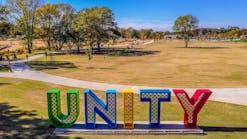Hydromodification 101: Predicting & Mitigating Stormwater Impacts to Stream Stability
According to the U.S. EPA, hydromodification – resulting from land use alteration – is one of the leading sources of impairment in our waterbodies. And if left unmanaged, causes increased channel erosion, sedimentation, planform migration, and baseflow alterations permanently damaging the surrounding environment and stormwater infrastructure. How can you predict and model the potential hydromodification impact on your site? And…how can you avoid or mitigate resulting damage?
Join Judd Goodman to explore hydromodification (key factors, modeling strategies, etc.) and a step-by-step approach you can use to predict, model, AND mitigate the hydromodification impacts and damage to your environment and stormwater infrastructure.
This webinar will be available live on Thursday, September 10th, 11:00 a.m. – 12:30 p.m. PDT / 2:00 p.m. – 3:30 p.m. EDT, and available on-demand after the live event. Register for the event by clicking the button below.
Learn more about hydromodification now from our webinar speaker:
Additional details:
In this webinar we’ll start by diving into hydromodification, its root causes (e.g., land alteration, etc.), key factors affecting stream stability, and potential hydrologic and geomorphic outcomes. Building on this foundation, Goodman will lay out a step-by-step approach for predicting and mitigating hydromodification impacts by accounting for changes to the dominant controls on channel form (e.g., discharge and sediment supply) as well as the form itself (e.g., channel geometry and bed / bank material). Within this methodology, we’ll discuss how you can properly characterize the four key factors controlling channel adjustment for both the pre- and post-disturbance condition, and how you can incorporate these characterizations as inputs to a long-term continuous sediment transport model. Using this model, Goodman will demonstrate how you can predict the likelihood of channel form adjustment based on the ratio of sediment transport capacity and sediment supply in the pre- and post-disturbance conditions.
We’ll then move to mitigation, taking a look at how you can use stormwater BMPs and stream rehabilitation to manage hydromodification and mitigate its impacts (channel erosion, stream degradation, biologic impact, etc.). Goodman will present real-world examples of hydromodification management that have positively impacted water supply, quality, habitat, and public safety, and how you can utilize these techniques for your projects. And finally, we’ll bring into context how these technical principles align with and meet current stormwater regulations.
Learning Objectives
Attendees can expect the discussion and education of the following learning objectives.
- Learn what hydromodification is and why it is important to manage.
- Understand the four key factors that affect stream stability.
- Learn about a modeling strategy used to predict hydromodification impacts.
- Understand how stormwater BMPs and stream rehabilitation can be employed to manage hydromodification.
Date & Time:
Thursday, Sept. 10th @ 11:00am PDT / 2:00pm EDT
Presenter:
Judd Goodman, P.E.
Senior Water Resources Engineer
Geosyntec Consultants
Credits: 1 PDH / 0.1 CEU
Cost: $79







